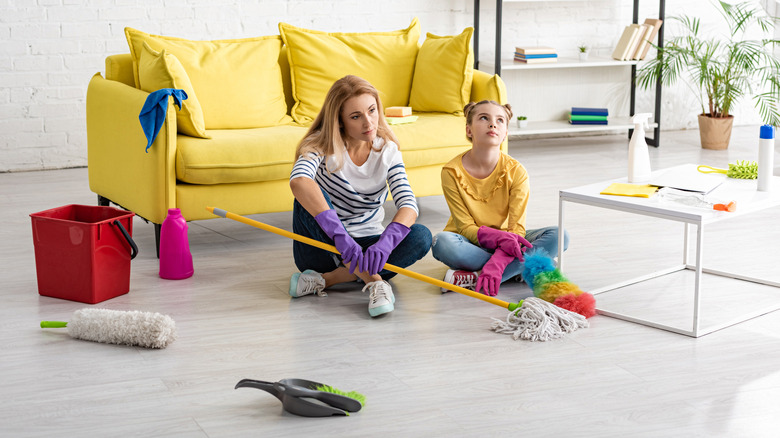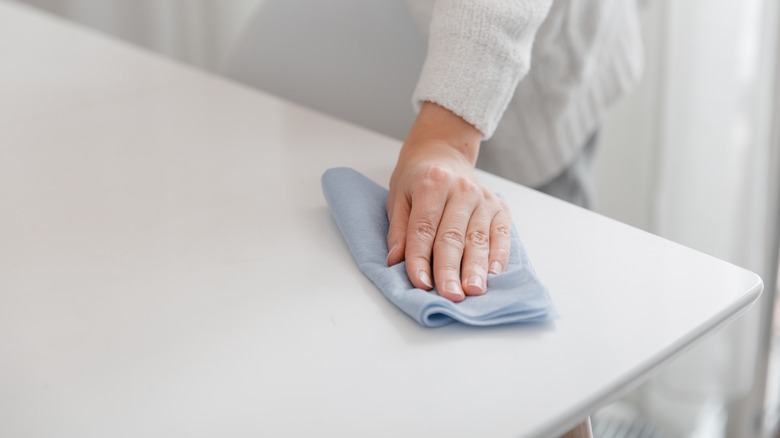The Cleaning Tool That's Actually A Waste Of Time
We may receive a commission on purchases made from links.
Picture this: It's your weekly cleaning day, and you've completed most of your tasks. All that's left to do is dust. You grab your feather duster and start sweeping the shelves, but you notice they either appear the same or collect more grime in the aftermath. Surely, you think, the feather duster should have picked up every last particle, but it left the surfaces looking filthy instead. What's going on here?
It turns out feather dusters don't pick up the dust; they spread it to other areas. While their feathers are bouncy and light, allowing them to fit in the most hard-to-reach places, they don't capture the dust as you might expect. Instead, you end up with dust particles flying around your house, landing in other spots, and even resettling in the original areas.
Dust comes from many sources, such as clothing, carpet fibers, pets, soot, and even dead skin cells. Even though the particles are tiny, they quickly gather on hard surfaces, making them more noticeable. When dusting, it's best to use tools that easily pick up the dust, such as a vacuum equipped with a nozzle attachment. This approach won't remove all of the particles, but it'll work better than a standard feather duster. Thankfully, you can use a few other tools to make your house dust-free.
Feather duster alternatives that will actually eliminate dust
Use a damp microfiber cloth after you vacuum to maximize your dust-busting efforts. These cloths have split microfibers that are much more absorbent than regular cloths. In addition, they have a positive charge, allowing them to attract negatively charged particles like dust, enabling you to clean your dusty surfaces much quicker than using a feather duster or cotton towel. Simply dampen the microfiber cloth and wipe the dusty areas. An economical choice, you can pick up a pack of 12 microfiber cloths from Walmart for $12.98. You can even reuse them multiple times by washing them separately from clothes and blankets in the washing machine.
Another handy dusting tool is an air purifier, which helps to remove dust from the air before it lands on hard surfaces. Air purifiers suck in the dust and allergen particles, run them through a filter, and release clean, purified air back into the house. While one air purifier could work to cover a smaller home, you might need multiple units depending on your square footage and the size of your rooms. However, they'll work to minimize large dust particles, so you won't have to dust as often. The Winix 5500-2 Air Purifier, available on Amazon for $159.99, should work for most rooms and has a sleep and auto mode that turns it on and off when needed.

